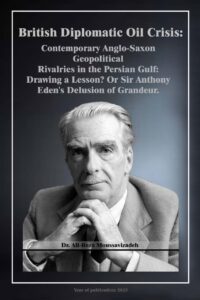The British Imperial Establishment, Post Imperial Era, and the ‘Churchillian’ World View, 1945-2016. (Adjustments & Challenges in Contemporary British Diplomatic Strategy)
50
This
British financial supremacy was at a peak just before the 1914-18 war. But
international crises and internal
weaknesses buffeted Britain and she did not
succeed in trying to recover and maintain her position during the
next twenty
years after the 1914-18 war. As a result she was replaced by the United States as
chief
creditor of Canada and much of Latin America (especially the Argentine
and Chile), but she maintained her
position in “Australia, India, Africa, her
Eastern Empire and China. Also she was investing considerably
in the Middle
East for oil and other areas such as Venezuela. Overall Britain was declining
faster in
trade than in investment, and while in the 1930s no-one could doubt the
power of the American dollar, London
remained as a leading financial centre.”27
At the same time,
however, this situation was somewhat misleading. The
economy of Britain had serious flaws. The pound was
over-valued and Britain’s
relative trading decline placed strains on the financial ability of the
British
capitalist. By 1939 the economic advance of Germany and Japan together with
the untested
economic might of the United States were posing crucial threats to
the maintenance of Britain’s position
as a great power in the world.
Pages: 1 2 3 4 5 6 7 8 9 10 11 12 13 14 15 16 17 18 19 20 21 22 23 24 25 26 27 28 29 30 31 32 33 34 35 36 37 38 39 40 41 42 43 44 45 46 47 48 49 50 51 52 53 54 55 56 57 58 59 60 61 62 63 64 65 66 67 68 69 70 71 72 73 74 75 76 77 78 79 80 81 82 83 84 85 86 87 88 89 90 91 92 93 94 95 96 97 98 99 100 101 102 103 104 105 106 107 108 109 110 111 112 113 114 115 116 117 118 119 120 121 122 123 124 125 126 127 128 129 130 131 132 133 134 135 136 137 138 139 140 141 142 143 144 145 146 147 148 149 150 151 152 153 154 155 156 157 158 159 160 161 162 163 164 165 166 167 168 169 170 171 172 173 174 175 176 177 178 179 180 181 182 183 184 185 186 187 188 189 190 191 192 193 194 195 196 197 198 199 200 201 202 203 204 205 206 207 208 209 210 211 212 213

